List of shoguns
This article is a list of shoguns that ruled Japan intermittently, as hereditary military commanders,[1] from the establishment of the Asuka period in 709 until the end of the Tokugawa shogunate in 1868.
Asuka period / Heian period (709–1184)
Note: there are different shogun titles. For example Kose no Maro had the title of Mutsu Chintō Shōgun (陸奥鎮東将軍, lit. "Great General of Subduing Mutsu"). Ki no Kosami had the title of Seitō Taishōgun (征東大将軍, lit. "Commander-in-chief for the pacification of the East") [2] in 789 which is less important than Sei-i Taishōgun. Ōtomo no Otomaro was the first person who was granted the title of Seii Taishōgun (征夷大将軍, lit. "Great appeasing general of the barbarians"). Sakanoue no Tamuramaro was the second, and Minamoto no Yoritomo was third person who had the title of Sei-i Taishōgun.
| No. | Portrait | Name (birth–death) |
Shogun from | Shogun until |
|---|---|---|---|---|
| 1 |  | Kose no Maro | 709 | 709 |
| 2 | 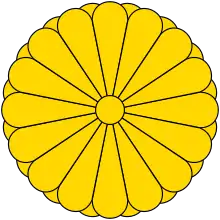 | Tajihi no Agatamori | 720 | 721 |
| 3 | 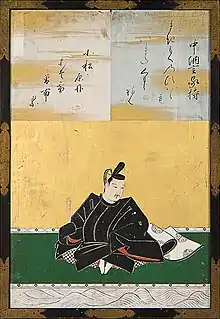 | Ōtomo no Yakamochi (c. 718–785) | 784 | 785 |
| 4 |  | Ki no Kosami | 788 | 789 |
| 5 |  | Ōtomo no Otomaro (731–809) | 793 | 794 |
| 6 | 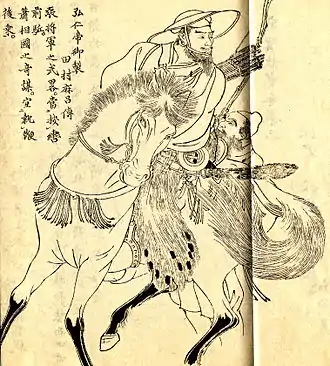 | Sakanoue no Tamuramaro (758–811) | 797 | 808 |
| 7 |  | Funya no Watamaro (765–823) | 811 | 816 |
| 8 |  | Fujiwara no Tadabumi (873–947) | 940 | 940 |
| 9 | 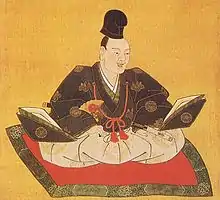 | Minamoto no Yoshinaka (1154–1184) | 1184 | 1184 |
Kamakura shogunate (1192–1333)
| No. | Portrait | Name (birth–death) |
Shogun from | Shogun until |
|---|---|---|---|---|
| 1 | 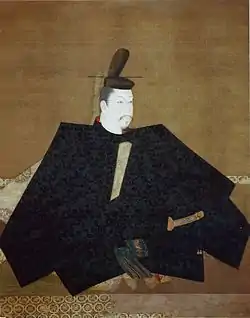 | Minamoto no Yoritomo (1147–1199) | 1192 | 1199 |
| 2 | 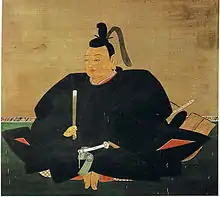 | Minamoto no Yoriie (1182–1204) | 1202 | 1203 |
| 3 | 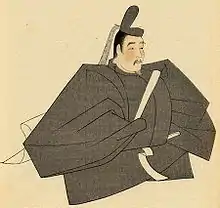 | Minamoto no Sanetomo (1192–1219) | 1203 | 1219 |
| 4 |  | Kujō Yoritsune (1218–1256) | 1226 | 1244 |
| 5 |  | Kujō Yoritsugu (1239–1256) | 1244 | 1252 |
| 6 |  | Prince Munetaka (1242–1274) | 1252 | 1266 |
| 7 |  | Prince Koreyasu (1264–1326) | 1266 | 1289 |
| 8 |  | Prince Hisaaki (1276–1328) | 1289 | 1308 |
| 9 |  | Prince Morikuni (1301–1333) | 1308 | 1333 |
Kenmu Restoration (1333–1336)
| No. | Portrait | Name (birth–death) |
Shogun from | Shogun until |
|---|---|---|---|---|
| 1 | 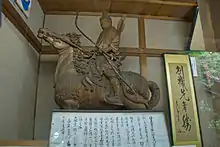 | Prince Moriyoshi (1308–1335) | 1333 | 1333 |
| 2 |  | Prince Narinaga (1326 – c. 1337–44) | 1335 | 1336 |
Ashikaga shogunate (1336–1573)
| No. | Portrait | Name (birth–death) |
Shogun from | Shogun until |
|---|---|---|---|---|
| 1 | 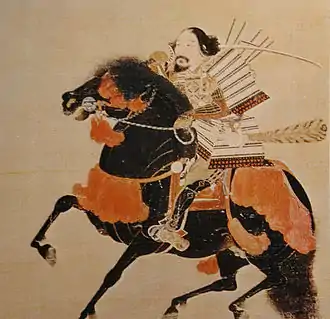 | Ashikaga Takauji (1305–1358) | 1338 | 1358 |
| 2 | 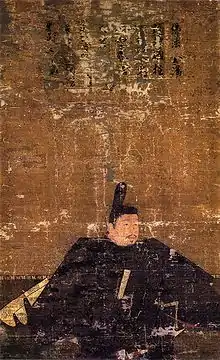 | Ashikaga Yoshiakira (1330–1367) | 1359 | 1367 |
| 3 | 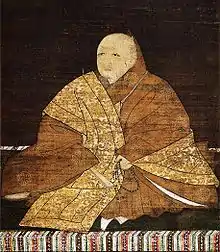 | Ashikaga Yoshimitsu (1358–1408) | 1369 | de jure 1395 de facto 1408 |
| 4 |  | Ashikaga Yoshimochi (1386–1428) | 1395 | de jure 1423 de facto 1428 |
| 5 |  | Ashikaga Yoshikazu (1407–1425) | 1423 | 1425 |
| 6 |  | Ashikaga Yoshinori (1394–1441) | 1429 | 1441 |
| 7 |  | Ashikaga Yoshikatsu (1434–1443) | 1442 | 1443 |
| 8 |  | Ashikaga Yoshimasa (1436–1490) | 1449 | de jure 1474 de facto 1490 |
| 9 | 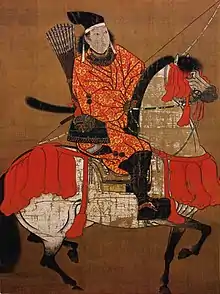 | Ashikaga Yoshihisa (1465–1489) | 1474 | 1489 |
| 10 |  | Ashikaga Yoshitane (1466–1523) | 1490 | 1493 |
| 11 |  | Ashikaga Yoshizumi (1481–1511) | 1495 | 1508 |
| (10) |  | Ashikaga Yoshitane (1466–1523) | 1508 | 1522 |
| 12 |  | Ashikaga Yoshiharu (1511–1550) | 1522 | de jure 1547 de facto 1550 |
| 13 |  | Ashikaga Yoshiteru (1536–1565) | 1547 | 1565 |
| 14 |  | Ashikaga Yoshihide (1538–1568) | 1568 | 1568 |
| 15 | 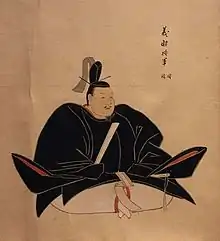 | Ashikaga Yoshiaki (1537–1597) | 1568 | deposed 1573 abdicated 1588 |
Azuchi–Momoyama period (1568–1600)
The following were military dictators of Japan, de facto shoguns from 1568 to 1598. They unified the country, which at the start were a chaotic patchwork of warring clans.
| No. | Portrait | Name (birth–death) |
de facto shogun from |
de facto shogun until |
|---|---|---|---|---|
| 1 | 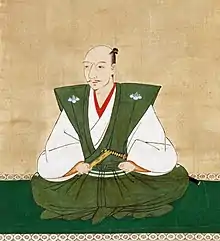 | Oda Nobunaga (1535–1582) | 1568 | de jure 1575 de facto 1582 |
| 2 |  | Oda Nobutada (1557–1582) | 1575 | 1582 |
| 3 |  | Oda Hidenobu (1580–1605) | 1582 | 1583 |
| 1 |  | Toyotomi Hideyoshi (1537–1598) | 1585 | de jure 1592 de facto 1598 |
| 2 | 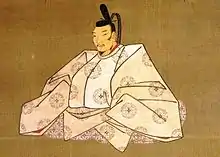 | Toyotomi Hidetsugu (1568–1595) | 1592 | 1595 |
| 3 |  | Toyotomi Hideyori (1593–1615) | 1598 | de jure 1603 |
From 1598 to 1600, the de facto shogunate was delegated to the Council of Five Elders.
Tokugawa shogunate (1600–1868)
| No. | Portrait | Name (birth–death) |
Shogun from | Shogun until |
|---|---|---|---|---|
| 1 | 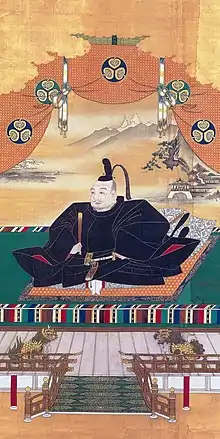 | Tokugawa Ieyasu (1543–1616) | de facto 1600 de jure 1603 | de jure 1605 de facto 1616 |
| 2 | 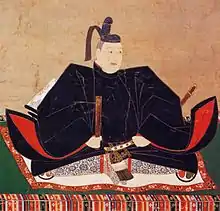 | Tokugawa Hidetada (1579–1632) | 1605 | de jure 1623 de facto 1632 |
| 3 | 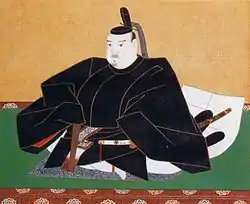 | Tokugawa Iemitsu (1604–1651) | 1623 | 1651 |
| 4 | 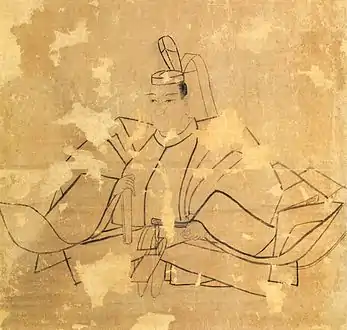 | Tokugawa Ietsuna (1641–1680) | 1651 | 1680 |
| 5 | 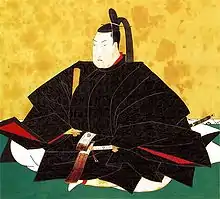 | Tokugawa Tsunayoshi (1646–1709) | 1680 | 1709 |
| 6 | 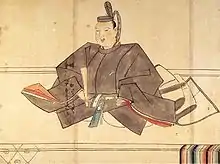 | Tokugawa Ienobu (1662–1712) | 1709 | 1712 |
| 7 | 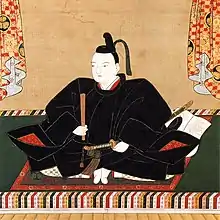 | Tokugawa Ietsugu (1709–1716) | 1713 | 1716 |
| 8 | 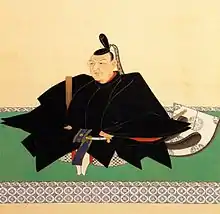 | Tokugawa Yoshimune (1684–1751) | 1716 | de jure 1745 de facto 1751 |
| 9 |  | Tokugawa Ieshige (1712–1761) | 1745 | de jure 1760 de facto 1761 |
| 10 | 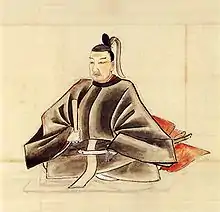 | Tokugawa Ieharu (1737–1786) | 1760 | 1786 |
| 11 | 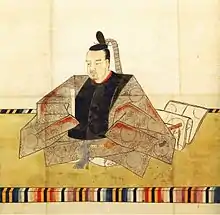 | Tokugawa Ienari (1773–1841) | 1787 | de jure 1837 de facto 1841 |
| 12 | 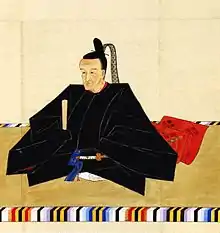 | Tokugawa Ieyoshi (1793–1853) | 1837 | 1853 |
| 13 | 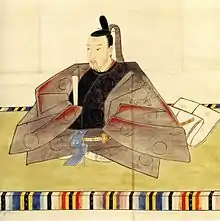 | Tokugawa Iesada (1824–1858) | 1853 | 1858 |
| 14 |  | Tokugawa Iemochi (1846–1866) | 1858 | 1866 |
| 15 | 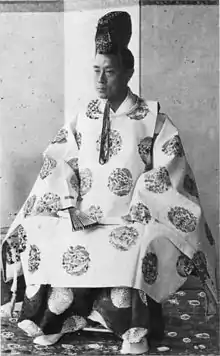 | Tokugawa Yoshinobu (1837–1913) | 1867 | 1868 |
Post-bakufu heads of the Tokugawa clan (1868–present)
In 1882, the head of the Tokugawa clan was given the title of Prince (kōshaku) under the kazoku peerage system and permitted to sit in the House of Peers of the Imperial Diet. Two of them served as President of that body.
| No. | Portrait | Name (birth–death) |
Head from | Head until |
|---|---|---|---|---|
| 1 |  | Tokugawa Iesato (1863–1940)[lower-alpha 1] | 1868 | 1940 |
| 2 | 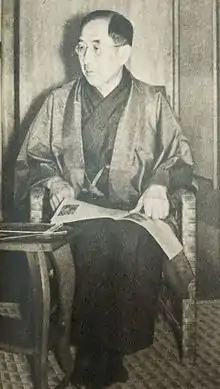 | Tokugawa Iemasa (1884–1963)[lower-alpha 2] | 1940 | 1963 |
| 3 |  | Tokugawa Tsunenari (born 1940) | 1963 | Incumbent |
Supreme Commanders for the Allied Powers
The Supreme Commanders were informally known as Gaijin Shōgun (外人将軍) during their tenure.[3]
| No. | Portrait | Supreme Commander for the Allied Powers | Took office | Left office | Time in office | Defence branch | President of the United States |
|---|---|---|---|---|---|---|---|
| 1 | General Douglas MacArthur (1880–1964) | 15 August 1945[lower-alpha 3] | 11 April 1951[lower-alpha 4] | 5 years, 239 days | Harry S. Truman | ||
| 2 | General Matthew Ridgway (1895–1993) | 11 April 1951 | 12 May 1952[lower-alpha 5] | 1 year, 31 days | Harry S. Truman |
Notes
- Served as President of the House of Peers from 1903 to 1933.
- Served as President of the House of Peers from 1946 to 1947.
- Assumed command following the surrender of Japan.
- Relieved of command by President Truman.
- Served until the Treaty of San Francisco came into effect.
See also
References
- Britannica – Shogunate
- Friday, 2007:108.
- Valley, David J. (April 15, 2000). Gaijin Shogun : Gen. Douglas MacArthur Stepfather of Postwar Japan. Title: Sektor Company. ISBN 978-0967817521. Retrieved 2 June 2017.
Bibliography
- Friday, Karl (2007). The First Samurai: The Life and Legend of the Warrior Rebel, Taira Masakado. John Wiley and Sons. ISBN 0-471-76082-X.

